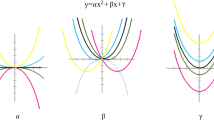Abstract
More than 60 patients with retinal vessel occlusions were examined using the electro-oculogram (EOG) ramp test. In the course of the disease a systematic disturbance of the slow oscillation of the corneoretinal potential occurred. First, the latency of the light peak increased. Then the peak decreased and was reached up to 5 min later than in the healthy eye. In the final stage the basic level dropped to about half of the normal value and light response was absent. During the next few weeks an improvement in the basic level took place, but usually this did not involve improved vision.
Zusammenfassung
Mit dem EOG-Rampen-Test wurden mehr als 60 Patienten mit Netzhautgefäßverschlüssen untersucht. Wir fanden einen systematischen Verlauf des Erlöschens der langsamen Schwingung des corneo-retinalen Potentials. Zuerst tritt eine größere Latenzzeit des Hellgipfels auf. Danach kommt es zu einer Amplitudenabnahme des Hellgipfels, der bis zu 5 Minuten später als in dem gesunden Auge erreicht wird. Im Endstadium ist der Basis-Wert bis auf die Hälfte erniedrigt und die Hellantwort ist völlig erloschen. Im Zeitraum einiger Wochen erholt sich der Basis-Wert wieder, ohne daß eine Visusbesserung eintreten muß.
Similar content being viewed by others
References
Adams A (1973) The normal electro-oculogram (EOG). Acta Ophthalmol (Copenh) 51: 551–561
Arden GB, Barrada A, Kelsey JH (1962) New clinical test of retinal function based upon standing potential of the eye. Br J Ophthalmol 46: 449–467
Babel J, Stangos N, Korol S, Spiritus M (1977) Ocular Electrophysiology. Thieme, Stuttgart
Carr RE, Siegel IM (1964) Electrophysiologic aspects of several retinal diseases. Am J Ophthalmol 58: 95–107
François J, Szmigielski M, Verriest G, de Rouck A (1965) The influence of changes in illumination on the standing potential of the human eye. Ophthalmologica 150: 83–91
Gliem H (1971) Das Elektrookulogramm. Samml v Monographien Bd 40. Thieme, Leipzig
Gouras P, Carr RE (1965) Cone activity in the light-induced DC response of monkey retina. Invest Ophthalmol 4: 318–321
Gouras P (1969) Clinical electro-oculography. In: Straatsma BR (ed) The Retina. University of California Press, Berkeley and Los Angeles, pp 565–581
Griff ER, Steinberg RH (1981) The origin of the light peak: in vitro study of gekko gekko. Lecture at ARVO Spring Meeting, Sarasota, USA
Kelsey JH (1967) Variation of the normal electro-oculogram Br J Ophthalmol 51: 44–49
Kolder H (1959) Spontane und experimentelle Änderungen des Bestandpotentials des menschlichen Auges. Pflügers Arch 268: 258–272
Kris C (1958) Corneo-fundal potential variations during light and dark adaptation. Nature (Lond) 182: 1027–1028
Krogh E (1975) Normal values in clinical electrooculography. Acta Ophthalmol (Copenh) 53: 563–575
Küchle HJ (1977) Zur Therapie der akuten arteriellen Durchblutungsstörungen von Netzhaut und Sehnerven. Klin Monatsbl Augenheilkd 171: 395–406
Linsenmeier RA, Steinberg RH (1981) Origin and sensitivity of light peak of the intact cat eye. Lecture at ARVO Spring Meeting, Sarasota, USA
Nagaya T (1964) The standing potential of the eye in vascular and degenerative disease of the retina. Bull Yamaguchi Med Sch 11: 187–201
Nilsson SEG (1971) Human retinal vascular obstructions. A quantitative correlation on angiography and electroretinographic findings. Acta Ophthalmol (Copenh) 49: 111–133
van Norren D, Valeton JM (1981) Relation between the EOG, corneal- and intraretinal slow potentials. Lecture at 19th ISCEV Symposium, Zürich, Switzerland
Müller W, Haase E (1970) Inter- und intraindividuelle Streuung im EOG. Graefe's Arch Clin Exp Ophthalmol 181: 71–78
Reeser F, Weinstein GW, Feiock KB, Oser RS (1970) Electrooculography as a test of retinal function. Am J Ophthalmol 70: 505–514
Rohde N, Täumer R, Braas F (1976) An EOG computer and stimulator for the investigation of the slow retinal potential. Bibl Ophthalmol 85: 75–83
Rohde N, Täumer R, Pernice D (1977) Vorschlag eines verbesserten klinischen EOG-Testes. Ber Zusammenkunft Dtsch Ophthalmol Ges 74: 747–750
Rohde N (1979) Eine Bemerkung zur Interpretation pathologischer EOG-Veränderungen. Ber Zusammenkunft Dtsch Ophthalmol Ges 76: 437–440
Rohde N, Täumer R, Bleckmann H (1981) Examination of the fast oscillation of the corneoretinal potential under clinical conditions. Graefe's Arch Clin Exp Ophthalmol 217: 79–90
Straub W (1961) Das Elektroretinogramm. Klin Monatsbl Augenheilkd [Suppl 36], Enke, Stuttgart
Täumer R, Mackensen G, Hartmann H, Moser U, Stehle R, Werner W, Wolf D (1974) Verhalten des „Bestandpotentials“ des menschlichen Auges nach Belichtungsänderungen. Graefe's Arch Clin Exp Ophthalmol 189: 81–97
Täumer R, Rohde N, Pernice D, Kohler U (1976 a) EOG: light test and dark test. Graefe's Arch Clin Exp Ophthalmol 199: 207–213
Täumer R, Rohde N, Wichmann W, Röver J (1976 b) A method for DC-ERG recording of alert humans. Graefe's Arch Clin Exp Ophthalmol 189: 45–55
Thaler A, Heilig P (1974) The steady state in EOG. Doc Ophthalmol Proc Ser IV: 211–216
Thaler A, Kolder HE, Hayreh SS, Heilig P (1981) Peak latency of the light-induced slow EOG oscillation. Ophthalmic Res 13: 117–121
Tomita T, Murakami M, Hashimoto Y (1960) On the R-membrane in the frog's eye: its localization and relation to the retinal action potential. J Gen Physiol 43: 81–94
Zonneveldt A, van Lith GHM (1980) The electrooculogram and its interindividual and intraindividual variability. Ophthalmologica 181: 165–169
Author information
Authors and Affiliations
Rights and permissions
About this article
Cite this article
Täumer, R., Rohde, N. & Wollensak, J. Course of disturbance of EOG in retinal vessel occlusions. Graefe's Arch Clin Exp Ophthalmol 219, 29–33 (1982). https://doi.org/10.1007/BF02159976
Received:
Issue Date:
DOI: https://doi.org/10.1007/BF02159976




